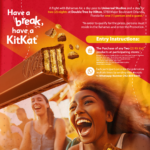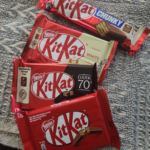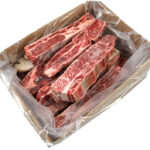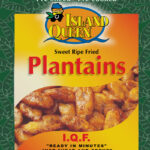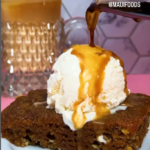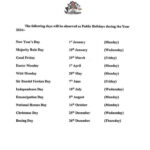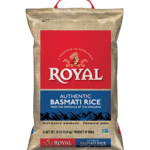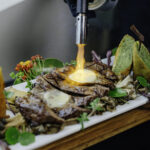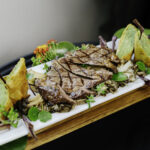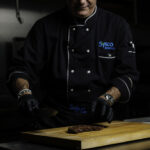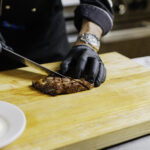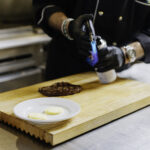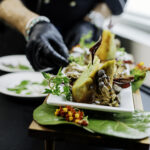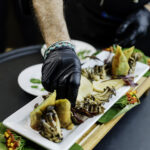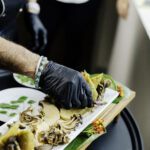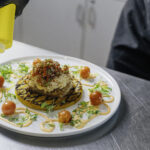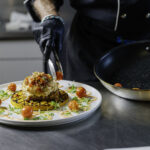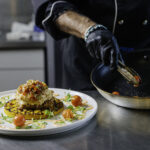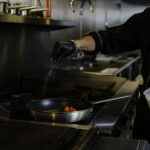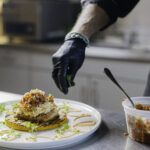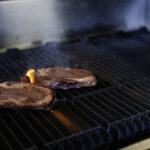Veal on the menu signals something special and elegant to the consumer. It is the favoured meat of royalty and classical European cuisine. Today, veal enjoys a contemporary appeal for both fine dining, home cooking and casual dining. It is versatile, nutritious, low-fat, cost-effective and always flavourful. A good chef can be creative or classic in their preparation and presentation to showcase the myriad uses of veal.
Read on for “Ethical Concerns”, Benefits and Suggested Uses
Ethical Concerns? You should know that modern veal production is one of the most regulated industries, and veal farmers know that providing a safe, clean and caring environment produces healthy animals which translates to a higher quality meat product. Remember also that veal meat comes from the male dairy calf, which is a by-product of dairy farming and cannot be used for anything else. Dairy cattle is not used for meat, and male cattle do not give milk. As long as there is a demand for fresh milk, the veal industry will be sustainable and necessary.
Visit THIS LINK for a full Veal Guide produced by VealFoodService.com
TASTE: Mild, soft meaty flavour. Tender, can taste almost like very soft pork. Delicate texture is ideal for showcasing technique and sauces.
BENEFITS:
- High-end appeal – special occasions, etc.
- High portion yield = Good value
- High protein, nutrient dense, low fat and comparable in cholesterol to fish and chicken. A 3 oz. cooked, trimmed serving of veal provides 160 calories or 8% of a 2,000 calorie diet.
- Labour-saving: A leg roast can be left to cook unattended for hours, which frees up kitchen labour time.
DIRECTIONS: Cook most veal cuts to 160° (medium). Do not overcook as the low fat content will make it tough.
Cutlets: Trim fat after cooking not before, but slice the fat on chops to prevent curling. Pound cutlets to a uniform thickness. Dry meat with paper towels to maximise browning. Do not over-handle. Panfry or grill over medium heat
Whole roasting: Brown slowly, cover and braise over low heat.
SUGGESTED USES: Dishes Traditionally Made with Veal
- Wiener Schnitzel (breaded and panfried)
- Veal Scallopini (small pieces cooked in tomato sauce)
- Veal Cordon Bleu (stuffed with ham and cheese)
- Marsala (cooked in Marsala wine)
- Veal Piccata (schnitzel with lemon caper sauce) – TRY THIS AT Capriccio Italian Restaurant in Cable Beach
- Milanese (topped with gremolata which is lemon zest, garlic and fresh herbs)
Other Ideas for a high-end market:
- Veal Parmigiana – Schnitzel topped wtih marinara sauce and mozzarella then browned
- Saltimbocca (rolled with prosciutto and sage and marinated)
- Veal Oscar A Swedish high-end dish consisting of veal medallions topped with crabmeat, asparagus and béarnaise sauce.
- Veal Orloff – Braised, sliced and layered into a stack with mushrooms and onions between, then topped with Mornay sauce and browned in the oven
Visit THIS LINK for a full Veal Guide produced by VealFoodService.com


